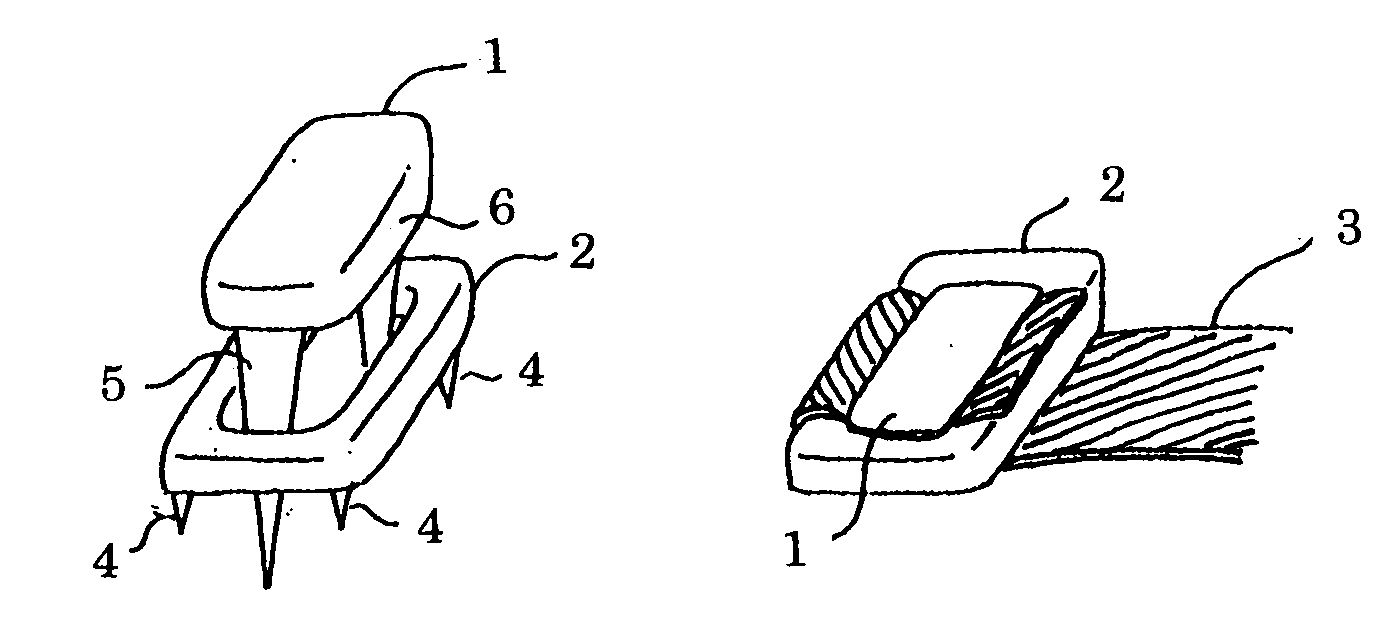Ligament fixing system
a fixing system and ligament technology, applied in the field of ligament fixing system, can solve the problems of increasing the invasiveness of the patient, affecting the healing effect of patients, and destroying bone tissue at the time of staple removal
- Summary
- Abstract
- Description
- Claims
- Application Information
AI Technical Summary
Problems solved by technology
Method used
Image
Examples
Embodiment Construction
[0020] Hereafter, explanation of the realization of this invention is made in reference to drawings. FIG. 1 shows the fixing system of combining Staple 1 and Plate 2 according to claim 1. The bottom part of Plate 2 has Spikes 4 on the Plate's four corners, the Spikes temporarily fix Ligament 3 on the bone surface, and the central part of the plate has holes. Ligament 3 is folded up in the opposite direction from the originally pulled direction, and when Staple 1 is driven, the two Legs 5 of Staple 1 reach the bone surface through the hole parts of Plate 2, the bottom of the Horizontal part 6 of Staple 1 presses the Ligament 3 onto the bone surface, and will fix Ligament 3.
[0021] FIG. 2 shows the type according to claim 2, the type of which has two rows of holes in the plate center aligned along the longitudinal direction of the plate. By driving two staples, the ligament can be fixed with stronger fixing force.
[0022] FIG. 3 shows the type according to claim 3, the plate type of whic...
PUM
 Login to View More
Login to View More Abstract
Description
Claims
Application Information
 Login to View More
Login to View More - R&D
- Intellectual Property
- Life Sciences
- Materials
- Tech Scout
- Unparalleled Data Quality
- Higher Quality Content
- 60% Fewer Hallucinations
Browse by: Latest US Patents, China's latest patents, Technical Efficacy Thesaurus, Application Domain, Technology Topic, Popular Technical Reports.
© 2025 PatSnap. All rights reserved.Legal|Privacy policy|Modern Slavery Act Transparency Statement|Sitemap|About US| Contact US: help@patsnap.com



